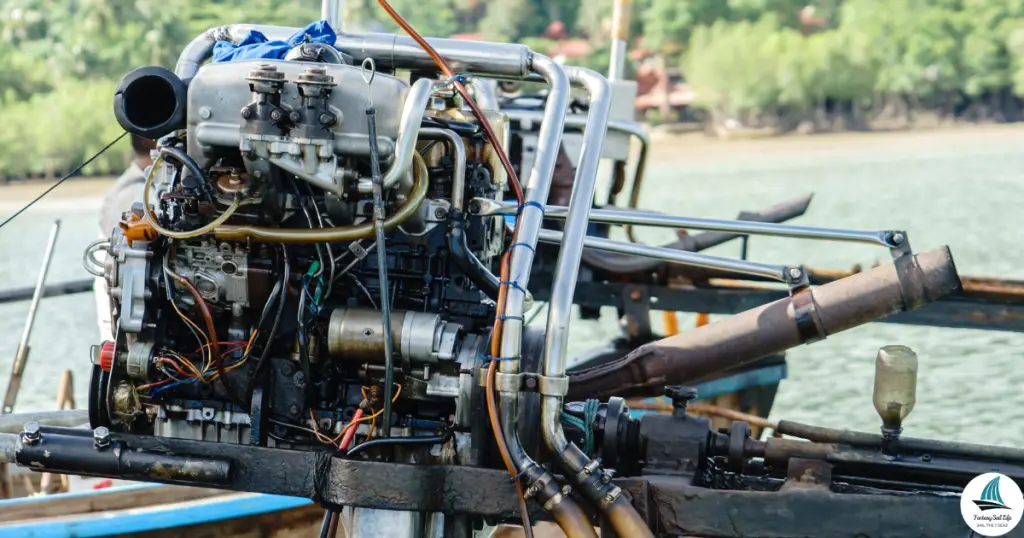If you own a 350 Chevy boat engine, you may need to adjust the valves every once in a while. This is a crucial maintenance procedure that ensures your engine runs smoothly and efficiently. One of the most popular Chevy engines is the 350 Chevy, which has been around for decades and has proven to be a reliable and robust engine. In this article, we’ll take a look at the 350 chevy valve adjustment sequence.
Process 1: Chevy 350 Valve Adjustment Sequence
Before starting the valve adjustment process, it’s essential to know a few things. Firstly, make sure your engine is cold, and the rocker arms are free from any oil. Secondly, ensure that you have the correct tools, including a feeler gauge, a wrench, and a screwdriver. Lastly, you need to know the firing order of your engine. For a 350 Chevy engine, the firing order is 1-8-4-3-6-5-7-2.
Now, let’s get to the valve adjustment sequence. Follow the below steps:
- First, locate the TDC (Top Dead Center) mark on your engine. It’s usually located on the harmonic balancer. Set the TDC pointer at “0” for cylinder number 1.
- Now, identify the valves that you need to adjust. For the intake valves, you need to adjust the valves on cylinders 1, 2, 5, and 7. For the exhaust valves, you need to adjust the valves on cylinders 1, 3, 4, and 8.
- Loosen the adjusting nut until you feel the lash by rotating the pushrod.
- Tighten the adjusting nut while rotating the pushrod until all the lash is removed.
- Tighten the adjusting nut 1/2 full turn. This “centers” your lifter.
- After adjusting the valves on cylinders 1, 2, 5, and 7, rotate the engine 360 degrees until the TDC pointer is at “0” for cylinder number 6.
- Now, identify the valves that you need to adjust. For the intake valves, you need to adjust the valves on cylinders 3, 4, 6, and 8. For the exhaust valves, you need to adjust the valves on cylinders 2, 5, 6, and 7.
- Loosen the adjusting nut until you feel the lash by rotating the pushrod.
- Tighten the adjusting nut while rotating the pushrod until all the lash is removed.
- Tighten the adjusting nut 1/2 full turn. This “centers” your lifter.
- Lastly, double-check all the valves to ensure they are properly adjusted. Use a feeler gauge to measure the clearance between the rocker arm and the valve stem. The correct clearance should be listed in your engine’s manual.
Process 2: 350 Chevy Valve Adjustment Sequence

Didn’t like the first process? Here is another step-by-step process for adjusting the valves on a Chevy 350 engine:
But before we begin, it is essential to note that valve adjustment should be done on a cold engine. This is because a hot engine can cause the metal parts to expand, leading to incorrect valve clearance.
Step 1: Bring Cylinder 1 to TDC
To adjust the valves on a Chevy 350 engine, start by bringing the number one cylinder to Top Dead Center (TDC). You can find the TDC by aligning the timing mark on the harmonic balancer to the “zero” mark on the timing tab.
You can also determine TDC by using a piston stop tool or by using a long screwdriver in the spark plug hole to feel when the piston is at the top of its stroke.
Step 2: Loosen Rocker Arm Stud
Once you have located TDC, loosen the rocker arm stud on both valves on cylinder number one. This will allow the rocker arm to move freely.
Step 3: Adjust Valve Clearance
To adjust the valve clearance, use your fingertips to turn the pushrod. Keep turning the pushrod until you can no longer turn it. Once you reach this point, adjust the nut down an additional 1/4 to 1/3 turn.
Repeat this process on both valves on cylinder number one.
Step 4: Adjust the Remaining Valves
After adjusting the valves on cylinder number one, you can move on to the remaining valves. The sequence for adjusting the remaining valves is as follows:
- Exhaust valves on cylinders 1,3,4, and 8
- Intake valves on cylinders 1,2,5, and 7
Adjust the valves on each cylinder in the same manner as cylinder number one, by turning the pushrod until it can no longer be turned and then adjusting the nut down an additional 1/4 to 1/3 turn.
Once you have completed adjusting all the valves in this sequence, rotate the engine one full turn or 180 degrees to bring cylinder number six to TDC.
Step 5: Adjust the Remaining Valves on Cylinder 6
With cylinder number six at TDC, you can adjust the remaining valves in the following order:
- Exhaust valves on cylinders 2,5,6, and 7
- Intake valves on cylinders 3,4,6, and 8
Adjust the valves on each cylinder in the same manner as before, by turning the pushrod until it can no longer be turned and then adjusting the nut down an additional 1/4 to 1/3 turn.
Step 6: Reassemble Engine
Once you have adjusted all the valves in the proper sequence, you can reassemble the engine. If you have done the valve adjustment correctly, the valves should not need to be touched again.
Before we get into the ending segment you may check one of my recent articles on – Boat engine starts and then dies within a few seconds.
Final Words
In conclusion, adjusting the valves on a 350 Chevy engine is a relatively simple process. As long as you follow the correct sequence and take your time, you should be able to do it yourself.

